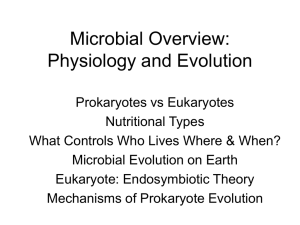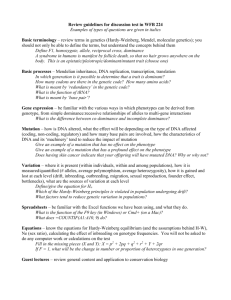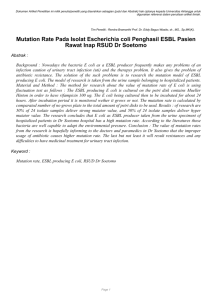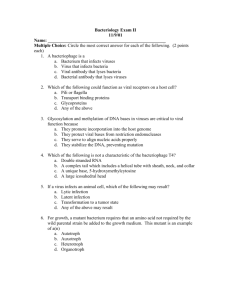λ Red Mediated Inactivation of ArcR In Escherichia Coli Using PCR
advertisement
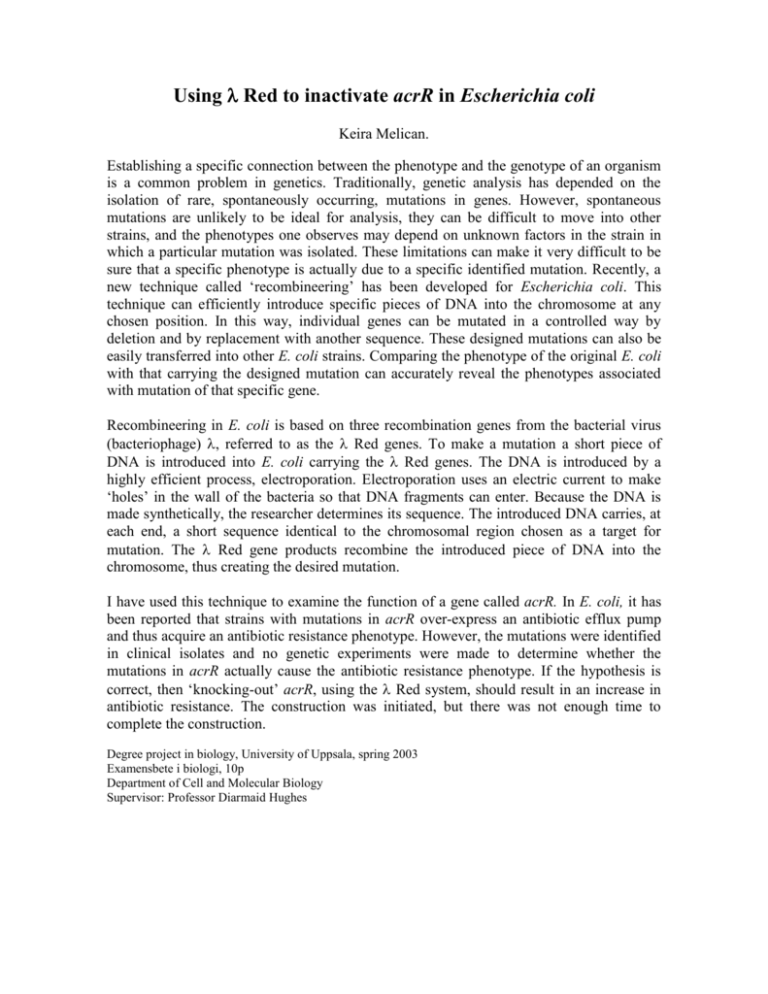
Using Red to inactivate acrR in Escherichia coli Keira Melican. Establishing a specific connection between the phenotype and the genotype of an organism is a common problem in genetics. Traditionally, genetic analysis has depended on the isolation of rare, spontaneously occurring, mutations in genes. However, spontaneous mutations are unlikely to be ideal for analysis, they can be difficult to move into other strains, and the phenotypes one observes may depend on unknown factors in the strain in which a particular mutation was isolated. These limitations can make it very difficult to be sure that a specific phenotype is actually due to a specific identified mutation. Recently, a new technique called ‘recombineering’ has been developed for Escherichia coli. This technique can efficiently introduce specific pieces of DNA into the chromosome at any chosen position. In this way, individual genes can be mutated in a controlled way by deletion and by replacement with another sequence. These designed mutations can also be easily transferred into other E. coli strains. Comparing the phenotype of the original E. coli with that carrying the designed mutation can accurately reveal the phenotypes associated with mutation of that specific gene. Recombineering in E. coli is based on three recombination genes from the bacterial virus (bacteriophage) , referred to as the Red genes. To make a mutation a short piece of DNA is introduced into E. coli carrying the Red genes. The DNA is introduced by a highly efficient process, electroporation. Electroporation uses an electric current to make ‘holes’ in the wall of the bacteria so that DNA fragments can enter. Because the DNA is made synthetically, the researcher determines its sequence. The introduced DNA carries, at each end, a short sequence identical to the chromosomal region chosen as a target for mutation. The Red gene products recombine the introduced piece of DNA into the chromosome, thus creating the desired mutation. I have used this technique to examine the function of a gene called acrR. In E. coli, it has been reported that strains with mutations in acrR over-express an antibiotic efflux pump and thus acquire an antibiotic resistance phenotype. However, the mutations were identified in clinical isolates and no genetic experiments were made to determine whether the mutations in acrR actually cause the antibiotic resistance phenotype. If the hypothesis is correct, then ‘knocking-out’ acrR, using the Red system, should result in an increase in antibiotic resistance. The construction was initiated, but there was not enough time to complete the construction. Degree project in biology, University of Uppsala, spring 2003 Examensbete i biologi, 10p Department of Cell and Molecular Biology Supervisor: Professor Diarmaid Hughes


